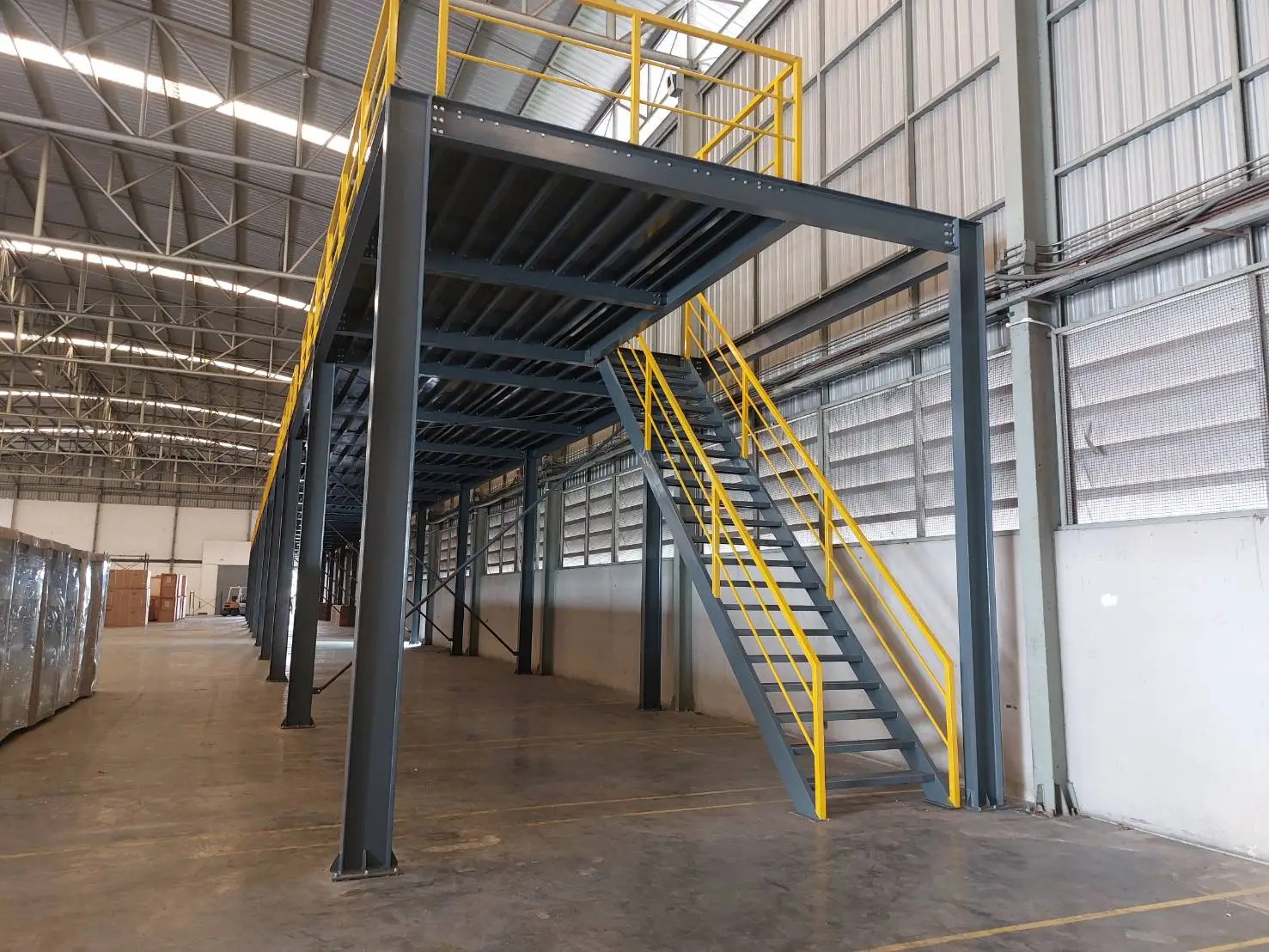Imagine transforming open spaces like mezzanine floors into energy-saving powerhouses! This guide will take you on a tour of energy modeling techniques that turn these architectural gems into efficient wonders. From carving out thermal zones to spotting tricky thermal bridges, we’ll show you how to harness the power of daylighting and advanced software to create buildings that live in harmony with nature and your energy bill.
How to Treat Open Mezzanine Floors in Energy Modeling
Okay, so you’re tackling energy modeling and you’ve got this open mezzanine staring back at you. No worries, we’ve got this! Open mezzanines are kind of like the cool kids in the room – they look awesome, but they can be a bit tricky when it comes to energy use. Let’s break it down:
Why Energy Modeling Matters
Think of energy modeling as giving your building a check-up before it even exists. Specialized software like OpenStudio and PAT help us create a digital twin of your building, and that includes the mezzanine. By simulating how air flows, heat moves around, and even how daylight plays in the space, we can fine-tune things to save energy and make the building super comfy.
Modeling Mezzanines for Efficiency
- Zone it Out! Just like cities have different neighborhoods, open mezzanines need to be divided into thermal zones. This helps us understand how temperatures might differ in various parts of the space and adjust things accordingly.
- Embrace the Breeze! Open mezzanines are awesome for cross-ventilation. By strategically placing windows and openings, we can use natural airflow to our advantage, cutting down on those energy-hogging air conditioners.
- Go with the Flow! Remember those fancy software programs we talked about? They can actually simulate how air and heat move through the mezzanine. It’s like having X-ray vision for your building’s energy performance!
The Power of Simulation
- Spot the Energy Hogs: Running simulations helps us identify any hidden energy suckers in your design. Think of it like a detective game for energy efficiency!
- Design Like a Pro: By playing around with different design options in the simulation, we can optimize the heck out of your building. This often translates to a more sustainable and budget-friendly project in the long run.
Taking Energy Modeling to the Next Level
- AI to the Rescue! Artificial Intelligence is making its way into the energy modeling world. Imagine AI helping us analyze data and fine-tune simulations with incredible accuracy. The future is now!
- Real-World Proof! Tons of case studies show just how powerful accurate mezzanine modeling can be. From slashing energy bills to creating healthier and more comfortable spaces, the benefits are undeniable.
- Green Building Goals: Accurate energy modeling isn’t just about saving the planet (although that’s a big plus!). It also helps us meet those fancy green building standards like LEED and BREEAM, which can boost your building’s value and reputation.
So there you have it! Modeling open mezzanines doesn’t have to be a headache. By using the right tools, collaborating with energy modeling gurus, and embracing a little creativity, you can create a building that’s both stunning and energy-efficient.
Understanding Open Mezzanine Floors and Energy Modeling
Alright, so we’ve talked about some of the cool things about open mezzanines – more space, visual appeal, that kind of thing. But let’s get real about their impact on a building’s energy use, especially if we’re aiming for sustainability. That’s where energy modeling comes in. Think of it like a digital crystal ball showing us how our building will use energy. This helps us design the best mezzanine possible.
Accurate Digital Representation
First things first, we can’t just sketch the mezzanine on a napkin and call it a day. We need special software that can handle those open spaces and funky shapes. We’re talking about dividing the mezzanine into zones based on temperature – kind of like climate zones but inside the building! This helps us see how heat naturally flows around the mezzanine and make adjustments for top-notch energy efficiency.
Comfort and Energy Savings
Now, let’s chat about maximizing comfort and keeping those energy bills in check. We can use the energy model to see how daylight will flood the space. We’ll move windows around, if we need to, to make the most of natural light and ventilation. And for the really tricky stuff, we can even simulate air movement in detail. It’s all about keeping things comfy for the people inside while using less energy – win-win!
Functionality and Design
Sure, mezzanines add visual interest, but they need to be functional, too. That’s where we factor in the nitty-gritty – the height of the mezzanine, where people will access it, and how it all structurally comes together. We want to make sure the space is usable and complements the overall design.
Modeling Complex Designs
Some mezzanines are like architectural puzzles – intricate and full of detail. For these head-scratchers, we bring out the big guns: 3D modeling and Computational Fluid Dynamics (CFD). These tools help us visualize how air flows, heat transfers, and light plays throughout the entire mezzanine, even with the most complex designs.
Sustainability and Streamlined Building
Remember Building Information Modeling (BIM)? Well, our mezzanine model buddies up with BIM to streamline the whole design and building process. Think of it like giving everyone on the team access to the same playbook. And of course, we’ll analyze how sustainable our design is by checking out things like its carbon footprint and how well we’ve harnessed natural light.
So, by really understanding how open mezzanines and energy modeling work together, we can create amazing buildings that are comfortable, energy-efficient, and easy on the planet.
Thermal Zoning Strategies for Open Mezzanines
We’ve covered some basics, but let’s dive into the nitty-gritty of dealing with open mezzanines when you’re trying to figure out energy use. These spaces can be tricky because they’re open and airy, which means the temperature can be all over the place.
Think Like a Thermal Detective
Imagine your mezzanine is like a separate room, even though it’s open to the floor below. That’s the key here – we need to treat it like its own little zone with its own unique thermal personality. This means dividing it up in your energy model so you can really get a handle on how heat moves around.
Bridge the Gaps, Not the Heat
Mezzanines often have these sneaky little spots where they connect to walls or other parts of the building. Think of them like hidden pathways for heat to escape! We call these “thermal bridges.” It’s like putting a hot cup of coffee on a cold windowsill – the heat’s gonna find a way to sneak out. We need to find these bridges and seal them up tight with insulation.
Let There Be (Optimized) Light
We all love a little sunshine, right? Well, sunlight plays a big role in how warm or cool our mezzanines get. When you’re modeling, pay close attention to those windows and skylights. The size, type, and even the direction they face can make a big difference. Too much sun and you’re cooking, too little and it’s a freezer!
Embrace the Power of Tech
Thankfully, we don’t have to do all this thermal detective work by hand! There’s some seriously cool software out there that can automate a lot of this zoning stuff for us. These programs can give us a detailed look at how the mezzanine is performing and highlight any areas where we can tweak things to save energy. Think of it like having a thermal x-ray vision for your building!
The Bottom Line
By applying these thermal zoning strategies, we can create mezzanines that are comfortable, energy-efficient, and kind to our wallets. It’s all about working smarter, not harder, and using the right tools to understand how heat flows in these unique spaces.
Identifying and Mitigating Thermal Bridges in Mezzanine Designs
We’ve already talked about some key aspects of mezzanine design, but let’s dive into a particularly important one: thermal bridges. Think of them as sneaky heat pathways that can really mess with your building’s energy efficiency.
Spotting Those Sneaky Thermal Bridges
Mezzanines, with their wide-open layouts and connections to walls and partitions, are practically playgrounds for thermal bridges. To outsmart them, we need to think like heat detectives. Imagine heat trying to escape your cozy mezzanine in the winter or sneak in during the summer. Where are its favorite hiding spots?
- Structural Supports: Check where beams, columns, or joists touch exterior walls or extend through the floor. These are prime locations for heat to make a run for it.
- Balconies and Railings: These stylish features, while great for aesthetics, can act as bridges for heat transfer if not properly insulated.
- Staircases: Yep, even staircases can be culprits! Their connection points to different floor levels need a close look.
Breaking the Thermal Bridge: Insulation is Key
Once you’ve identified those sneaky heat pathways, it’s time to break them! And the best weapon in our arsenal? Insulation, of course!
- Insulated Thermal Breaks: Imagine these as special barriers we install at connection points between different materials. They act like a “Do Not Enter” sign for heat, stopping it dead in its tracks.
- Continuous Insulation: Think of this as a cozy blanket we wrap around the entire mezzanine perimeter, preventing heat loss through walls and floors. No more drafts or chilly spots!
Mezzanines and Energy Modeling: A Dynamic Duo
Remember that energy modeling software we talked about? It’s a powerful tool for simulating how your mezzanine will perform in terms of energy use. Here’s how to make it work even better:
- Zone In: Divide your mezzanine into separate thermal zones within the software. This helps capture the unique temperature and humidity conditions of different areas for a more accurate picture.
- Let There Be (Smart) Light: Factor in daylighting! Strategically placed windows and skylights can reduce the need for artificial lighting and even heating during the day, saving energy and creating a more pleasant atmosphere.
Taking it Up a Notch: Advanced Simulation
For those who like to be at the forefront of technology, advanced simulation techniques like CFD (Computational Fluid Dynamics) can take your analysis to the next level. Imagine being able to see how air flows within your mezzanine – that’s CFD in action!
- Optimize HVAC: CFD simulations can help fine-tune your heating, ventilation, and air conditioning system for maximum efficiency and comfort.
- Minimize Energy Consumption: By understanding airflow patterns, you can make design adjustments to further reduce energy consumption and create a more sustainable mezzanine.
Wrapping It Up: Energy-Efficient Mezzanines
By understanding and addressing thermal bridges, you’re well on your way to creating a truly energy-efficient mezzanine. Remember, accurate modeling, careful insulation, and a touch of innovation are your recipe for success.
If you are looking to establish a building regulations application for a mezzanine office, learn all the necessary steps here. For those considering a shop mezzanine floor, we’ve compiled a comprehensive guide to help you build one that covers all the essential aspects. To get a better understanding of our capabilities, visit our building construction company profile or read our company profile for construction site to learn more about our approach to construction management.
- White Kitchen With Wood Countertops: A Warm Design - January 7, 2026
- Modern Butcher Block Kitchen: Warmth and Style with White Cabinets - January 6, 2026
- White Cabinets with Butcher Block Countertops: A Kitchen Classic - January 5, 2026










